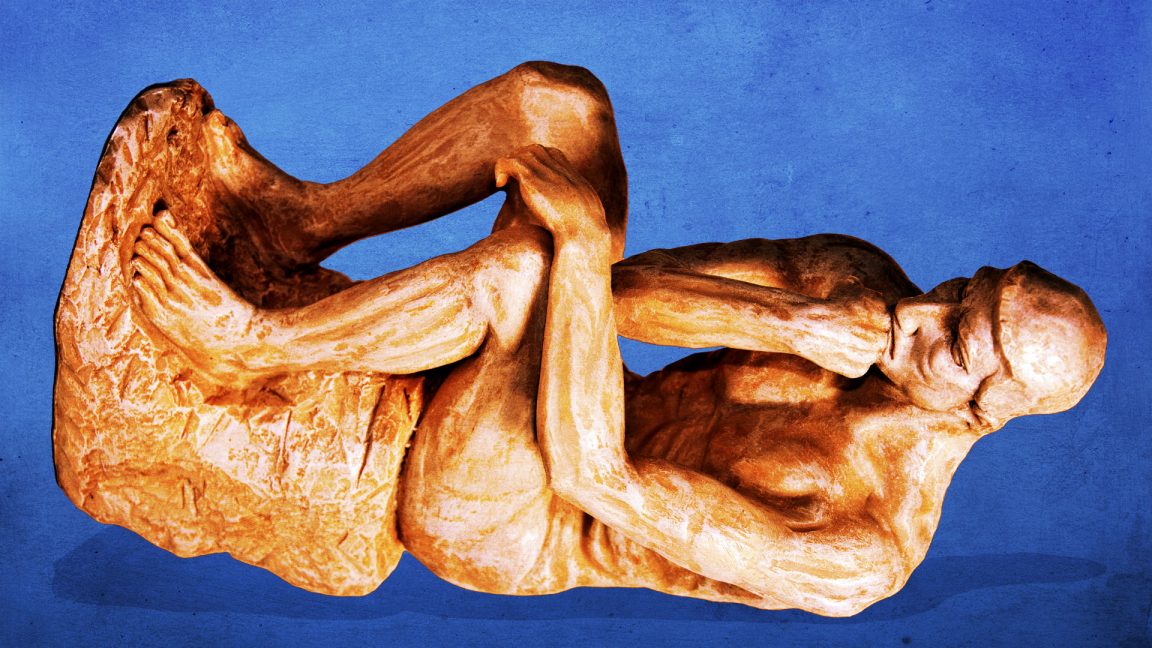#science-communication
#science-communication
[ follow ]
#climate-change #misinformation #public-engagement #public-health #philosophy-of-science #illustration
fromMail Online
4 weeks agoBig Brother's Flat Earthers get brutal response from scientist
During a downright bizarre conversation, Marcus says: 'I think there is still very good evidence that suggests the world is flat.' When asked by another housemate for said evidence, he replies: 'Well if you actually look at the horizon, it's a straight line.' Marcus then claims all pictures from space are 'obviously' fake made by AI and that humans have never been to the moon.
Science
fromArs Technica
1 month agoWhat if the aliens come and we just can't communicate?
Science fiction has long speculated about the possibility of first contact with an alien species from a distant world and how we might be able to communicate with them. But what if we simply don't have enough common ground for that to even be possible? An alien species is bound to be biologically very different, and their language will be shaped by their home environment, broader culture, and even how they perceive the universe. They might not even share the same math and physics.
Philosophy
fromdesignyoutrust.com
1 month agoStunning Vintage Covers of 'La Science et Vie Magazine', France's Vision of Modern Progress
Science et Vie, which translates to Science and Life, is a renowned French monthly magazine that has been captivating readers with science and technology content for over a century. First published in 1913 under the original title La Science et la Vie, it stands among Europe's oldest and most widely circulated science periodicals. h/t: vintag.es Celebrated for its ability to demystify complex subjects,
Science
fromSocial Media Explorer
1 month agoA Doctor's Guide to Sharing Clinical Trial Breakthroughs on Social Media - Social Media Explorer
The announcement of a positive result from a major clinical trial is an incredibly exciting moment in the world of medicine. It's a validation of years of painstaking research, a potential new tool for doctors, and, most importantly, a powerful new source of hope for patients and their families. As a physician or a researcher, the desire to share this exciting news with the public is a natural one.
Medicine
fromNature
2 months agoEarly efforts to understand the processes underlying bird migration
The problem of how migrating birds and homing pigeons navigate still remains unsolved in spite of intensive research efforts in the past few years. Over twenty years ago, Gustav Kramer suggested that in order to fly from an unfamiliar place to a geographically distant home site, a bird would need information analogous to a map (on which to read its own position and that of home), and a compass (to choose the appropriate direction indicated by the map). It is now well established that both migrating song birds and homing pigeons (on which much of the experimental work is done) have up to three types of compass-based on the Sun's azimuth, star patterns and the resultant of the Earth's magnetic field , but the nature of the map remains elusive ... [T]he big remaining mystery surrounding the magnetic compass, is how the bird's sensory system detects the Earth's magnetic field.
Science
fromBig Think
2 months agoDavid Kipping on how the search for alien life is gaining credibility
Like many people in this field, I've been fascinated since I was a kid. I think I was five or six when my parents gave me this massive book with a black cover and pictures of the planets. It was like an atlas of the Solar System. I remember being mesmerized by Jupiter and its moons. I'd stare at the page and memorize the masses and radii, then rush outside with my little telescope to find Saturn or Jupiter.
Science
fromwww.scientificamerican.com
3 months ago20 Years after Katrina, We're Still Learning from the Storm That Changed Everything
Twenty years ago, Hurricane Katrina became one of the deadliest storms ever to hit the U.S. After sweeping along the Gulf Coast, wreaking havoc in Louisiana and Mississippi, the massive storm ultimately led to 1,392 fatalities, according to the National Hurricane Center. Katrina's destruction centered on the city of New Orleans, where failing levees and floodwalls left most of the city underwater and displaced nearly all of its residents, some of them permanently.
Science
fromQNS
4 months agoOut of this world: Queens students have live Earth-to-space conversation with NASA astronaut - QNS
NASA is really interested in how our bodies react to long-duration space flight. So, we do a lot of tests, such as measuring our blood pressure or seeing what our organs are doing with ultrasound.
Science
Science
fromNature
7 months agoDaily briefing: These award-winning photos show scientists at work
Scientists' fieldwork photos celebrate the dedication and artistry in research, highlighting the calmness amid the chaos.
Debate exists over AI's role in writing scientific papers and its implications for future research.
Advancements in obesity-related cancer research suggest weight-loss drugs could outperform surgery.
Rovelli critiques bad philosophy as a barrier to progress in the field of physics.
[ Load more ]












